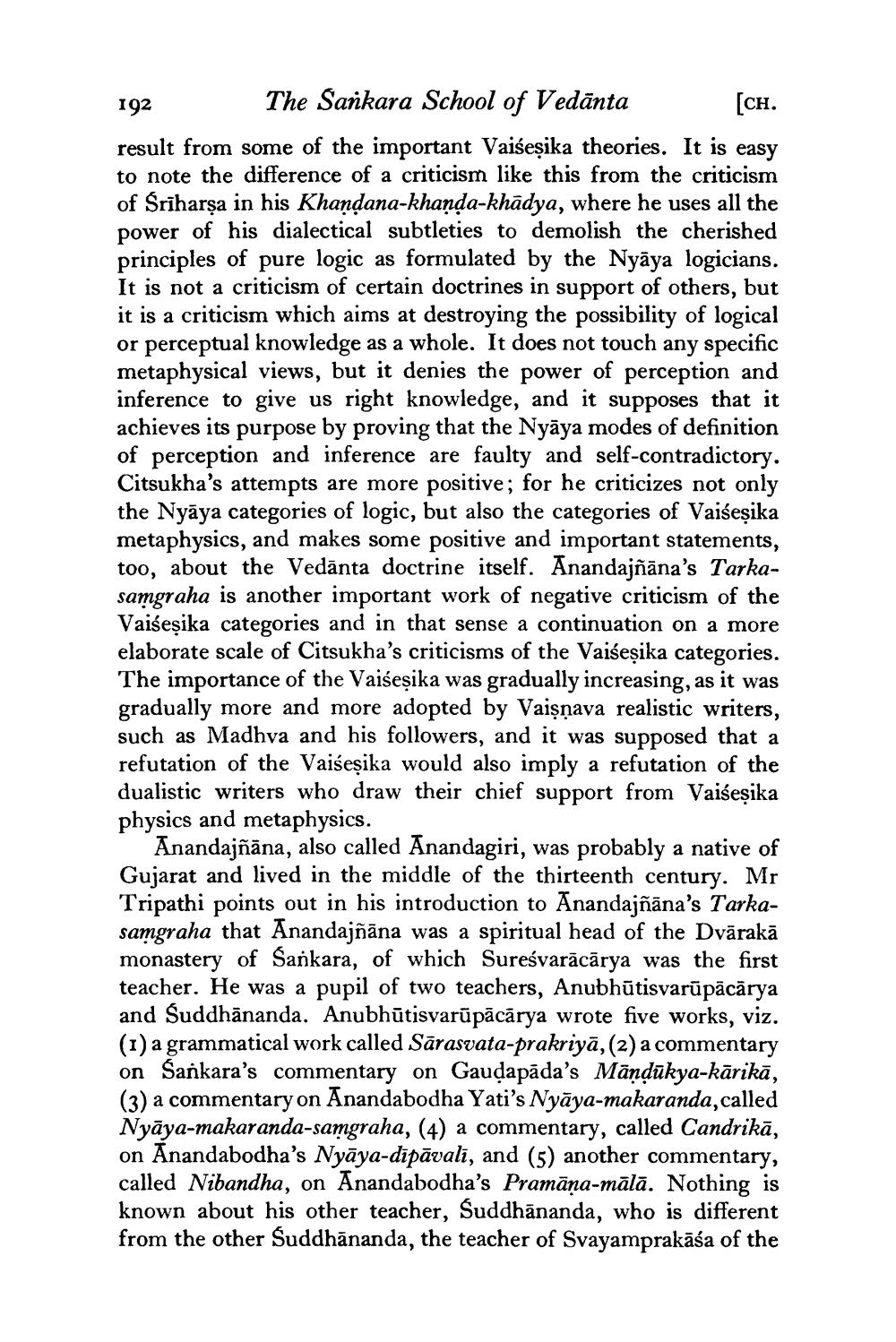________________
192
The Sankara School of Vedanta
[CH.
result from some of the important Vaiseṣika theories. It is easy to note the difference of a criticism like this from the criticism of Sriharṣa in his Khandana-khanda-khadya, where he uses all the power of his dialectical subtleties to demolish the cherished principles of pure logic as formulated by the Nyāya logicians. It is not a criticism of certain doctrines in support of others, but it is a criticism which aims at destroying the possibility of logical or perceptual knowledge as a whole. It does not touch any specific metaphysical views, but it denies the power of perception and inference to give us right knowledge, and it supposes that it achieves its purpose by proving that the Nyaya modes of definition of perception and inference are faulty and self-contradictory. Citsukha's attempts are more positive; for he criticizes not only the Nyaya categories of logic, but also the categories of Vaiseṣika metaphysics, and makes some positive and important statements, too, about the Vedanta doctrine itself. Anandajñāna's Tarkasamgraha is another important work of negative criticism of the Vaiseṣika categories and in that sense a continuation on a more elaborate scale of Citsukha's criticisms of the Vaiseṣika categories. The importance of the Vaiseṣika was gradually increasing, as it was gradually more and more adopted by Vaiṣṇava realistic writers, such as Madhva and his followers, and it was supposed that a refutation of the Vaiseṣika would also imply a refutation of the dualistic writers who draw their chief support from Vaiśeṣika physics and metaphysics.
Anandajñāna, also called Anandagiri, was probably a native of Gujarat and lived in the middle of the thirteenth century. Mr Tripathi points out in his introduction to Anandajñāna's Tarkasamgraha that Anandajñāna was a spiritual head of the Dvārakā monastery of Sankara, of which Sureśvarācārya was the first teacher. He was a pupil of two teachers, Anubhutisvarūpācārya and Suddhananda. Anubhutisvarupācārya wrote five works, viz. (1) a grammatical work called Sarasvata-prakriyā, (2) a commentary on Sankara's commentary on Gauḍapada's Manḍūkya-kārikā, (3) a commentary on Anandabodha Yati's Nyāya-makaranda, called Nyaya-makaranda-samgraha, (4) a commentary, called Candrikā, on Anandabodha's Nyaya-dipavali, and (5) another commentary, called Nibandha, on Anandabodha's Pramana-mālā. Nothing is known about his other teacher, Suddhananda, who is different from the other Suddhananda, the teacher of Svayamprakasa of the




